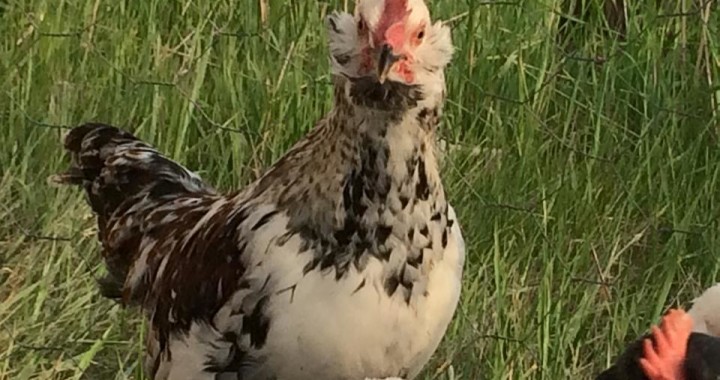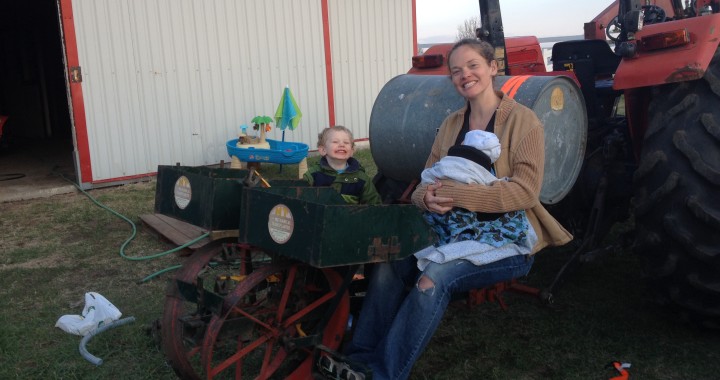I joked on Facebook recently that I know I have become a farmer because I am complaining about this wonderfully warm weather we have been having lately and saying it is too dry! Our saskatoons seem to be handling the dry weather well – in fact, if anything they seem to be blooming earlier than usual this year. Typically we would expect saskatoons to be ready for picking for the month of August. Based on how early the saskatoon trees bloomed, it appears berries should start appearing mid July to mid August this year! But when conditions are dry, the berries do not get as full and plump and the trees themselves do not grow as tall. Because we planted our 3 year Saskatoon trees 2 years ago, they are still only 5 years old. While they are producing fruit and will be ready for picking, they are not massive trees…yet!
Last year when we planted our strawberries, it was very wet. We initially planned to plant the strawberries in the back – but it was under water! So Tim and our neighbour, Bill, tilled a new piece of land in the front to use for the strawberry patch, thinking we can’t plant the strawberries under water! By the time we got the strawberry plants, the water in the back had mostly dried and we planted the extra strawberries there (the extras after we planted the entire front patch). We planted more strawberries in the front patch, which is on higher land (and thus was drier last year). Last year the front patch grew much better than the back patch. It seemed the back patch had too much moisture.
This year we are experiencing extremely dry weather. The opposite has happened. The strawberry plants in the back patch are doing so much better and blooming so much more than those in the front patch. Remember, blooms turn into fruit – so more blooms means more strawberries! Even though Tim’s degree and background is in agriculture, growing fruit is new to him. Growing plants in general is new to me! So it has been a steep learning curve for us both.
Why don’t we irrigate I asked Tim? Why don’t we just set up a sprinkler with a strong spray and let it go? We have a dugout but it is linked to the same water source as our neighbour’s home water source. If we pump water out of the dugout to irrigate the strawberries, based on how dry it has been and how much water we would need, we run the risk of running them out of water! We need to be mindful of them and be good neighbours! Our next option is to haul water in to irrigate. It will take a lot of loads of water to do that (think 2 loads of water per row based on the size of our water tank – times 30+ rows) – but if we don’t get rain soon, we may have to do just that. Farmers, including us (am I a real farmer now?!?), are at the mercy of the weather. Based on our experiences last year and this year, we are reconsidering how we will plant our next batch of strawberries next year. We are learning so much as we go!
We got a little bit of rain this past weekend but we still need much more. So for now, I am doing rain dances, washing my car and leaving my car windows open, all in hopes of rain!


